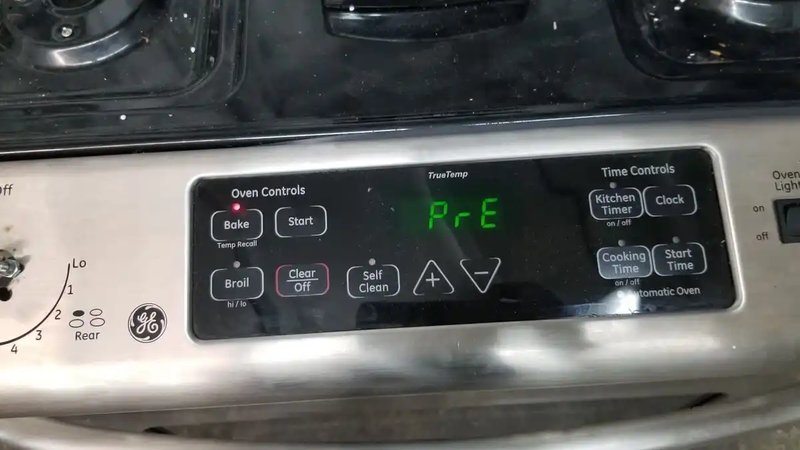
Think of your dryer like a well-tuned symphony. All parts need to work together in harmony to get that load of laundry perfectly dry. The temperature sensor plays a crucial role in this orchestra, ensuring the dryer heats up just right. When this sensor starts having issues, it can lead to uneven drying cycles or even damage your clothes. So, it’s important to understand a bit about why this error happens and what you can do to keep your dryer running smoothly.
Understanding the Error Code F2
Before we dive into prevention tips, it’s crucial to understand what exactly causes the F2 error. The F2 error in GE dryers points to a fault in the temperature sensor, also known as the thermistor. Think of it as the caregiver for your dryer’s heat levels, much like a thermostat in your home. If it malfunctions, the dryer might run too hot or too cold, or it might not start at all.
Why does this happen? There could be several causes. Sometimes, it’s simply wear and tear from regular use. Other times, it might be due to lint accumulation, which can insulate the thermistor, making it think your dryer is hotter than it actually is. This misunderstanding can trick the dryer into shutting down prematurely. Additionally, issues with wiring connections can also disrupt the sensor’s function, leaving you with stubbornly damp clothes.
The consequences of ignoring an F2 error can range from minor inconveniences to significant problems. Besides the frustration of playing the guessing game, continued issues can lead to increased energy bills, longer drying times, and potential damage to the heating element of the dryer. So, it’s in your best interest to tackle this problem head-on.
Regular Maintenance and Inspection
You might be wondering how regular maintenance can prevent the F2 error. Well, just like you wouldn’t skip oil changes for your car, you shouldn’t skip routine check-ups for your dryer either. Regular maintenance involves simple tasks that extend the lifespan of your appliance and keep errors at bay.
First, always ensure the lint trap is clean before every load. A clogged lint trap can block airflow, causing the dryer to overheat and potentially confuse the thermistor. Moreover, it’s a fire hazard—something you’d definitely want to avoid. Next, every few months, make it a habit to check the vent system. A blocked vent can prevent hot air from escaping, causing the dryer to overheat and leading to an F2 error.
Additionally, it’s a good idea to visually inspect the dryer’s wiring and connections. While you might not be an electrician, spotting frayed wires or loose connections can be a sign that professional help is needed. Catching these issues early can prevent more costly repairs down the line. If you notice any unusual signs, don’t hesitate to call a professional.
Keeping the Thermistor in Tip-Top Shape
Preventing the F2 error starts with ensuring the thermistor—the part responsible for regulating temperature—is in good shape. Imagine the thermistor as the thermostat’s eyes and ears in your dryer. It needs to be clean, well-connected, and free of obstacles to work properly.
Start by periodically cleaning the inside of your dryer to ensure no lint or debris builds up near the thermistor. It’s located near the heating element, and dust accumulation can insulate it, causing inaccurate readings. When cleaning, use a gentle vacuum or a soft brush; avoid using wet or corrosive cleaning solutions as these may damage the components.
Moreover, avoid overloading your dryer. Overloading can lead to uneven heating, putting extra stress on the thermistor as it struggles to compensate for the larger load. Think of trying to squeeze every last item into a packed suitcase—it’s bound to affect how the dryer operates.
Finally, make sure the dryer’s environment is suitable. If your laundry room is particularly humid or dusty, it might affect the thermistor’s performance. Try to keep the space well-ventilated and clean. If environmental controls are difficult, aim to at least maintain a consistent ambient temperature to help your dryer function optimally.
When to Call a Professional
Despite your best efforts, there might be times when the F2 error persists. This can be frustrating, but it’s important to know when to call in the reinforcements. If regular maintenance and preventive measures don’t resolve the issue, a professional technician may need to step in.
Professionals have the tools and expertise to diagnose deeper issues that might not be visible to the untrained eye. They can perform advanced tests on the thermistor, check intricate wiring, and ensure every component is communicating properly. In some cases, the thermistor might simply need recalibration or replacement, which a professional can handle safely.
Additionally, if your dryer is under warranty or a service plan, a professional technician visit could be covered. This can save you money and give you peace of mind, knowing that your appliance is in qualified hands. Remember, while DIY repairs can be tempting, they can sometimes lead to bigger problems if not done correctly.
So, to wrap things up, preventing the F2 error before it starts is all about regular care, environment control, and knowing when to seek help. A little attention goes a long way in keeping your GE dryer humming and your laundry cycle smooth.